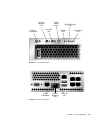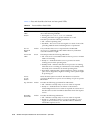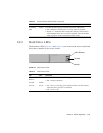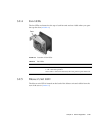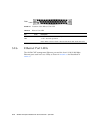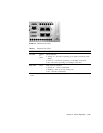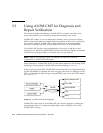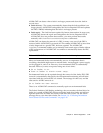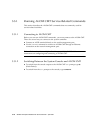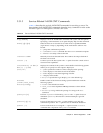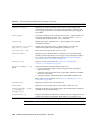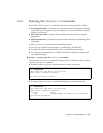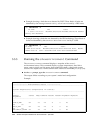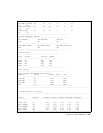
Chapter 3 Server Diagnostics 3-17
ALOM CMT can detect when a fault is no longer present and clears the fault in
several ways:
■ Fault recovery – The system automatically detects that the fault condition is no
longer present. ALOM CMT extinguishes the Service Required LED and updates
the FRU’s PROM, indicating that the fault is no longer present.
■ Fault repair – The fault has been repaired by human intervention. In most cases,
ALOM CMT detects the repair and extinguishes the Service Required LED If
ALOM CMT does not perform these actions, you must perform these tasks
manually with clearfault or enablecomponent commands.
ALOM CMT can detect the removal of a FRU, in many cases even if the FRU is
removed while ALOM CMT is powered off. This enables ALOM CMT to know that
a fault, diagnosed to a specific FRU, has been repaired. The ALOM CMT
clearfault command enables you to manually clear certain types of faults without
a FRU replacement or if ALOM CMT was unable to automatically detect the FRU
replacement.
Note – ALOM CMT does not automatically detect hard drive replacement.
Many environmental faults can automatically recover. A temperature that is
exceeding a threshold might return to normal limits. An unplugged a power supply
can be plugged in, and so on. Recovery of environmental faults is automatically
detected. Recovery events are reported using one of two forms:
■ fru at location is OK.
■ sensor at location is within normal range.
Environmental faults can be repaired through hot removal of the faulty FRU. FRU
removal is automatically detected by the environmental monitoring and all faults
associated with the removed FRU are cleared. The message for that case, and the
alert sent for all FRU removals is:
fru at location has been removed.
There is no ALOM CMT command to manually repair an environmental fault.
The Solaris Predictive Self-Healing technology does not monitor the hard drive for
faults. As a result, ALOM CMT does not recognize hard drive faults, and will not
light the fault LEDs on either the chassis or the hard drive itself. Use the Solaris
message files to view hard drive faults. See Section 3.6, “Collecting Information
From Solaris OS Files and Commands” on page 3-45.



